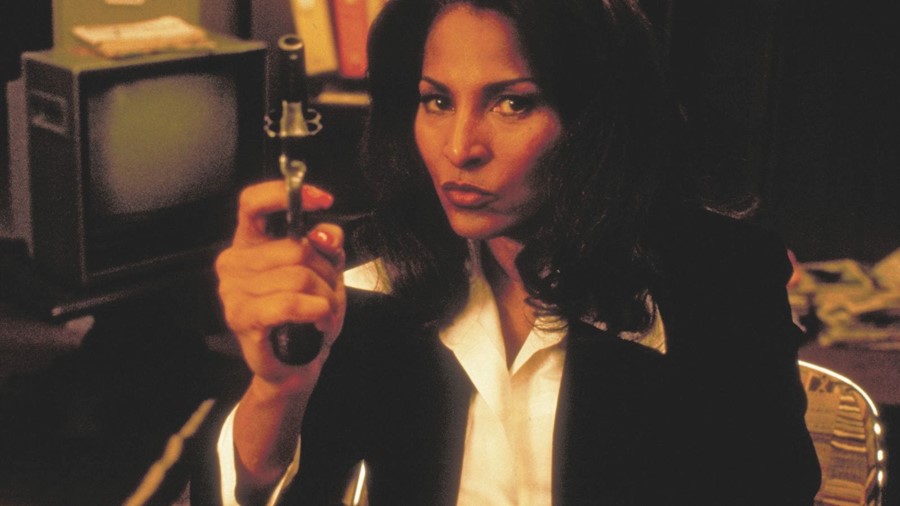As the BFI launches a new retrospective on Pam Grier – an actor known for her “style” and “sultry savoir-faire” – we recommend five films from her unorthodox career
Decades before Black Panther, Moonlight and Get Out were lighting up global box offices and awards ceremonies, and long prior to the emergence of Spike Lee (Do The Right Thing) and John Singleton (Boyz N The Hood), who laid the foundations of a golden age of Black cinema in the 1990s, Black cinema experienced one of its first major heydays with the blaxploitation boom of the 1970s.
A portmanteau of the words “Black” and “exploitation”, this vibrant movement was sparked by the successes of low-budget, Black-directed thrillers like Sweet Sweetback’s Baadasssss Song and Shaft in the early decade. With mainstream studio flicks in decline as counter-culture cinema was on the rise, and with Hollywood alerted to the untapped potential of the ‘Black dollar’, a wave of movies telling Black stories and starring Black actors were suddenly put into production – with violence, nudity and excitement often central to the appeal.
The gambit was a success. And while present-day reflections are critical of the limited stereotypes these films reinforced (usually under the direction of white filmmakers and producers), this was, nonetheless, an era during which Black actors, musicians, and other creatives were finding new opportunities together. As the sounds of Curtis Mayfield, Roy Ayers and Isaac Hayes filled the auditoriums, audiences flocked to see Fred Williamson (Black Caesar), Richard Roundtree (Shaft) and Pam Grier kicking white people’s asses on-screen.
The latter actor, a screen sensation who became celebrated as the “queen of blaxploitation” for her performances in a series of thrilling low-budget (and often X-rated) works, is celebrated this month by the BFI with a programme titled Pam Grier: Foxy, fierce and fearless. Known for her “style” and “sultry savoir-faire”, say the programmers, Grier became one of the de-facto icons of the era thanks to her dominant roles in women-in-prison films, violent revenge flicks, detective thrillers and even swords-and-sandals gladiator films (“See wild women fight to the death!”, reads the poster to Steve Carver’s 1974 film The Arena).
The BFI’s 14-film retrospective charts the many heights of Grier’s career – from the blaxploitation era to her Tarantino-inspired career revival in the 90s and beyond. Better yet, Grier herself will be present for a series of in-person reflections and discussions, in what is poised to be an unmissable event. Check out some of our highlights from the season below.
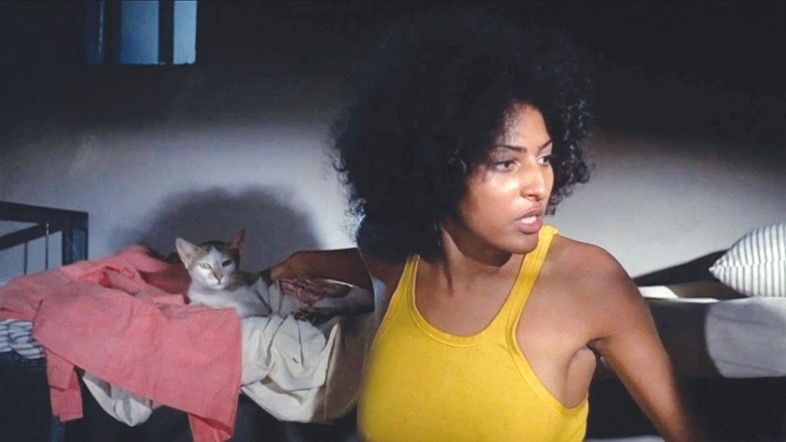
The Big Doll House, 1971
At the dilapidated Prison del Inferno, 150 scantily-clad women incarcerated for prostitution, espionage and murder are forced to work hard labour by scowling head warden Lucian (Kathryn Loder). If they rebel, they’ll be tortured with whips, fire hoses, electricity and venomous snakes. All the while, local sex pests Harry (Sid Haig, The Devil’s Rejects) and Fred (Jerry Franks) make regular visits to the prison hoping to take advantage of the suffering interns.
The Big Doll House makes for shocking viewing today, but in the 70s, this was just another entry in the highly profitable women-in-prison sexploitation sub-genre – which offered titillation and violence by the bucketload. In fact, both the abandoned Filipino prison in which The Big Doll House was filmed and the film’s core cast would be reused the same year in another production starring Pam Grier – though Women In Cages (also screening at the BFI, alongside other “chicks in chains” works The Big Bird Cage and Black Mama, White Mama) is a decidedly more nihilistic offering.
Still, this starring debut for Grier – who plays a fierce, cigarette-smoking top-bunker in the first of many collaborations with director Hill and co-star Haig – helped lay the roots for her ascendancy as an exploitation star. She’s magnetic thanks to her bold and brazen attitude, striking looks (including the classic yellow mini-dress and afro combo) and killer one-liners. “Get your ass back here or I’ll cave it in!” she declares.
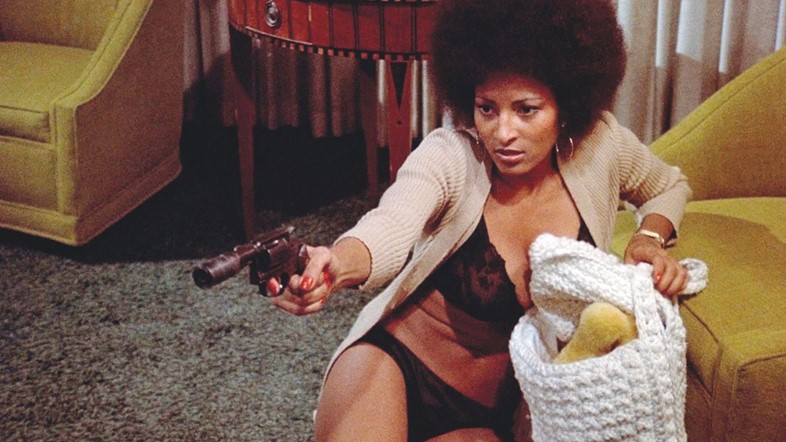
Coffy, 1973
A clear influence on Quentin Tarantino films like Jackie Brown and Kill Bill, Coffy finds Grier’s titular hospital nurse seeking justice after her young sister falls victim to the 70s LA drugs epidemic. When Coffy’s friend – one of the last good cops in town – is beaten to the point of brain damage, she’s pushed over the edge, and goes on an unstoppable campaign of bloody vengeance.
A huge financial success at the time of its release despite being filmed in just 18 days, on a budget of $500,000, Coffy bursts with 70s style to match its excessive nudity and raw, shocking violence. Jumpsuits, fedoras and pimps with canes are all over this thriller – which also packs in one-eyed mobsters, a funk-laden Roy Ayers soundtrack, and the indomitable Sid Haig as a wise-cracking henchman.
A bonafide blaxploitation classic, Coffy was also the film that made Grier, a strong Black female lead, a real star. She’s in outrageous form as a woman-on-a-mission who conceals razor blades in her hair and fires shotguns in the faces of her enemies. As the film’s poster puts it, “She’s ‘the baddest One-Chick Hit-Squad that ever hit town!” – and you can hardly argue with that.
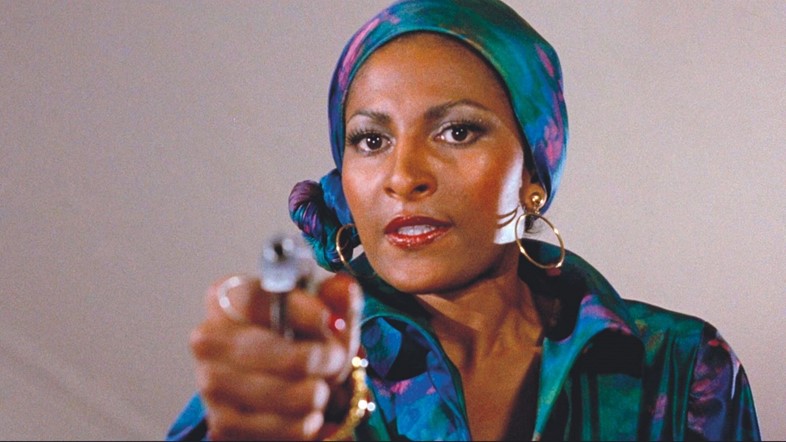
Foxy Brown, 1974
Originally released as a double-bill with crime thriller Truck Turner (starring funk-and-soul superstar Isaac Hayes), Foxy Brown was actually intended to be a straight-up sequel to Hill and Grier’s previous hit, Coffy, until studio execs pulled a last-minute U-turn. The resulting film was divisive among critics – The LA Times called it “another movie about vengeance, vigilantes, dope, call girls and violence interspersed with sex, vulgarity and hatred” – but it ended up being a financial success and, later, an influential cult classic.
Opening with a psychedelic, James Bond-like title sequence – in which Grier dances in colourful silhouettes to Willie Hutch’s ultra-funky score – the film quickly switches in tone as a shifty drug peddler is pursued down a dark street. The harried Link Brown (Antonio Fargas, Starsky & Hutch), Foxy’s kid brother, then finds himself cornered at a hot dog stand – until the titular heroine shows up in a red Dodge Charger to save the day.
But the drug syndicate – which includes The Big Doll House villain Kathryn Loder and The Godfather heavy Tony Giorgio – don’t give up there. Before long, Foxy Brown finds close allies picked off one by one, inspiring a personal vendetta for vigilante justice. Amid plane hijackings and sawn-off shotgun slayings, Foxy Brown (with the help of the Black Panthers and Sid Haig) kicks ass left right and centre hereafter, dropping outrageous one-liners all the while. And thanks in part to The Jackson 5 stylist Ruthie West, the film’s costume designer, she looks consistently fabulous while she does it.
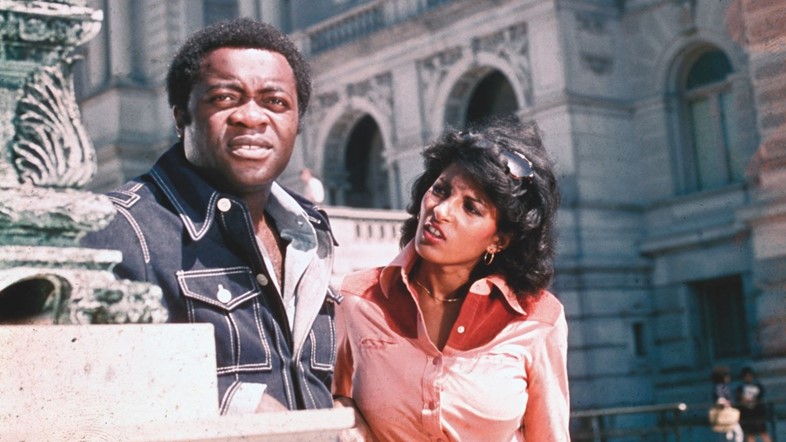
Friday Foster, 1975
‘Wham! Bam! Here comes Pam!’, reads the tagline on the poster to Arthur Marks’ 1975 thriller Friday Foster – well and truly confirming the star power that Grier had commanded by the mid-70s. Here, she plays an ex-model turned photographer named Friday Foster, who becomes embroiled in a political conspiracy in Washington DC after witnessing an assassination attempt on the wealthiest African American person in the USA.
Cue a heap of feather boas, bell bottoms and afro-haired beauties in this action-packed romp teeming with 70s style. But while the superfluous funk music, daring rooftop foot-chases, cigar-smoking sleuths and switchblade assassins ensure that this is a fun-filled outing from start to finish, there’s also a top-notch cast of blaxploitation legends whose presence elevates the entire production.
Several years before a fateful voyage into deep space in Alien, Yaphet Kotto plays a smooth-talking, suit-wearing private investigator here. His Live and Let Die co-star Julius Harris (who played claw-handed henchman Tee-Hee in the Bond flick) plays Foster’s mean-spirited boss, Riley. Santa Baby singer Eartha Kitt is a fashion show curator, while Scatman Crothers – the telepathic janitor from The Shining - appears as a titillated pastor. Perhaps the best of the lot, though, is a young Carl Weathers (Rocky, Predator) – who plays a near-mute crook hell bent on causing trouble for Foster and her sidekicks.
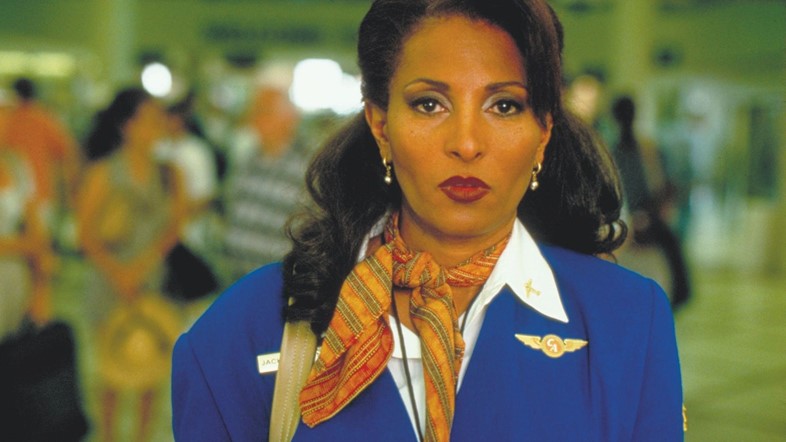
Jackie Brown, 1997
Having auditioned unsuccessfully for a role in Pulp Fiction in the early 90s before taking on supporting parts in films by Tim Burton and John Carpenter, Grier was invited to read for the lead in what would be Quentin Tarantino’s third film in 1997. Upon arriving at Tarantino’s office, Grier found his walls adorned with posters of her films, like Coffy and Foxy Brown. The titular role of LA heist movie Jackie Brown, arguably Tarantino’s best, was confirmed as hers soon after.
Jackie Brown opens with a memorable sequence in which Grier, a blue-uniformed air stewardess, is captured side-on as she passes mosaic-tiled walls on a moving walkway at an airport. She’ll soon be detained in the offices of two ATF agents, and interrogated for money and drug smuggling on behalf of the Kangol beret-wearing arms dealer Ordell Robbie (Samuel L Jackson). Facing jail time and financial disaster, Brown hatches an ambitious plan with smitten bail bondsman Max Cherry (Robert Forster) in an attempt to save her life – just as the police and her black market employer close in on her.
The cast is the heart and soul of this 90s classic, and Grier, in one of her most magnetic and iconic roles, was nominated for a Golden Globe for her performance while Forster, her sympathetic co-lead, was nominated for an Oscar. Neither had taken on a lead role in years at the time of production. Robert De Niro, meanwhile, is quietly hilarious as an offbeat ex-con with a cannabis problem – and Grier’s old blaxploitation co-star Sid Haig even shows up to deliver a memorable cameo as the judge in a courtroom scene.
This densely-plotted and character-driven work also offers countless references to Grier’s earlier career. Soundtrack cues, typefaces, poster designs and dialogues are among the easter eggs that nod to works like Coffy, Foxy Brown and The Big Doll House (as well as plenty of other blaxploitation flicks) – and Jack Hill and Roy Ayers are duly thanked in the credits. Grier would go on to appear in cult productions like Bones, Ghosts of Mars and Smallville thereafter, as her career received a boost in the wake of the film’s release.
The Pam Grier: Foxy, fierce and fearless film retrospective at BFI Southbank in London runs from 2 September–4 October, 2022.
